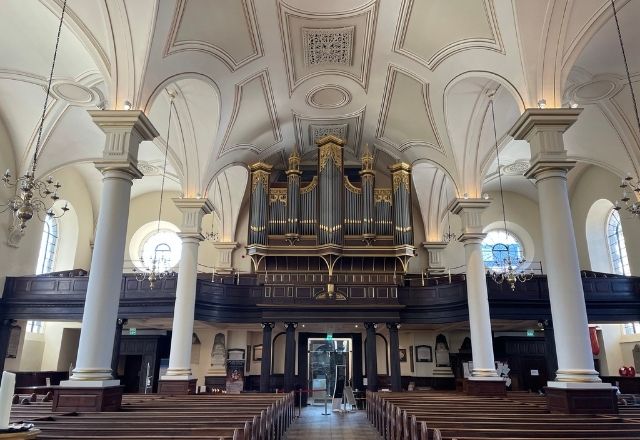The ailing state of the large Compton Organ at Derby Cathedral is well known in the organ community and so readers will expect this blog to be about a hire triggered by the failure of this instrument.
Many will be relieved to learn the Compton limps on and it was the failure of the Cousans Apse organ that led to a call to Viscount.
The Cousans Organ at Derby Cathedral
Choir singing came back at Derby very recently, but in the retro choir at the extreme east end in the Apse addition added by Architect Comper in the 1960’s. Accompaniment here has to be provided by the Cousans organ that sits in a very deep case directly above the choir stalls with the console close by on the south side of the Apse.
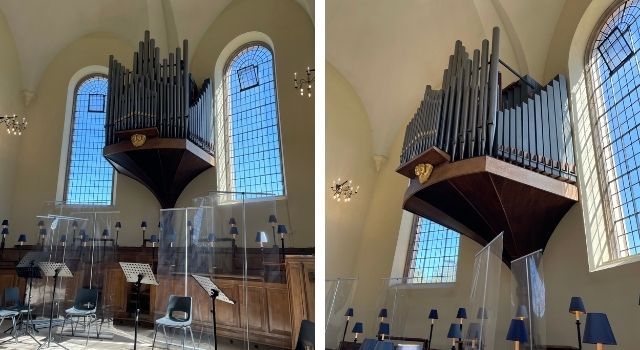
You will see this instrument has a limited stop list that must make interesting and sensitive accompaniment challenging. So a new instrument here is perhaps overdue and the current failure may well be an opportunity to consider a more practical long term solution.
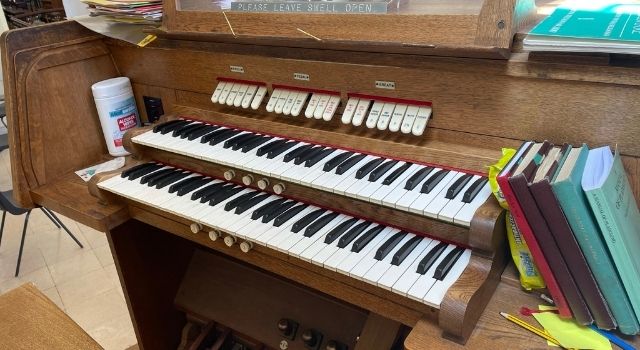
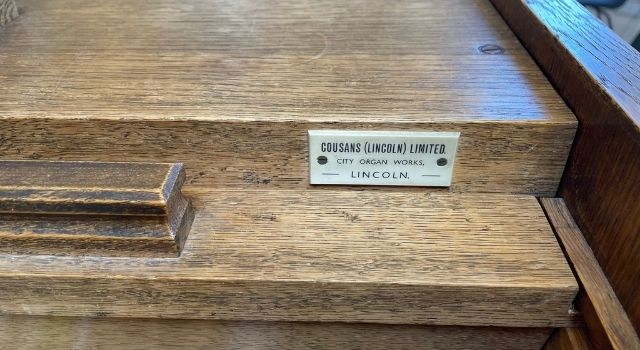
Having been instructed two days earlier we arrived in the morning to set up the Viscount organ. Our instrument will play on speakers placed in two convenient locations on north and south sides of the Apse. Swell is split on both sides of the space while Great Pedal and Choir are on the north side with the choir speakers set to project more directly into the nave.
Arriving at 10.30am, a very simple cable route allowed the installation to be finished by 12.30 pm. A further 2 hours of voicing and regulation and we were finished by 3.30pm.
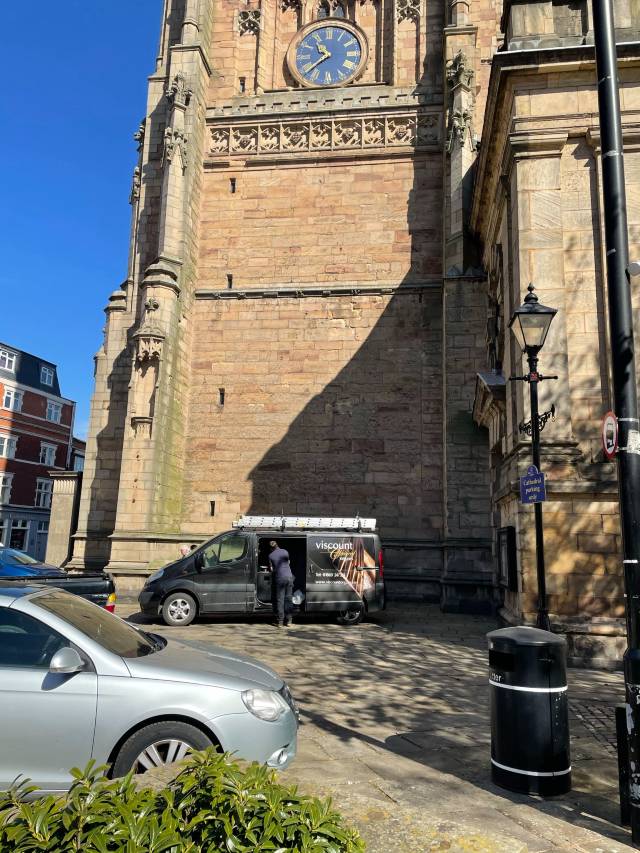
This was a recent rare opportunity to get out of the office and continue the work we love providing instruments for our church communities.
What about the Compton organ at the Cathedral?
A narrative on our visit to Derby would not be complete without mention of the famous Compton instrument. Here is a link to the NPOR entry.
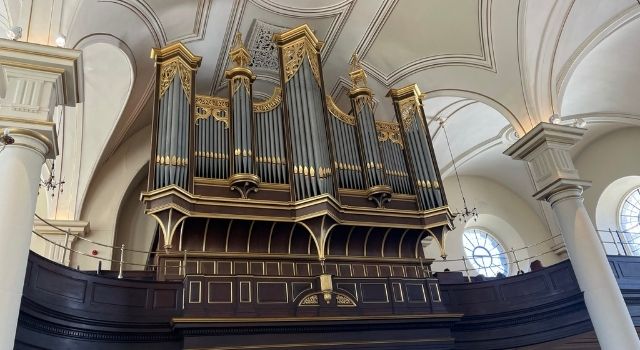
John Compton was technically very innovative using the ‘extension’ principle to squeeze far more stops out of a space than one might expect. He also often enclosed most of the instrument so, as here, the great and much of the pedal department is also in a swell box.
The instrument still has its original console which uses the ‘Compton’ illuminated stops system. Was this a cost saving I wonder or considered an advance that the technology of the time allowed?
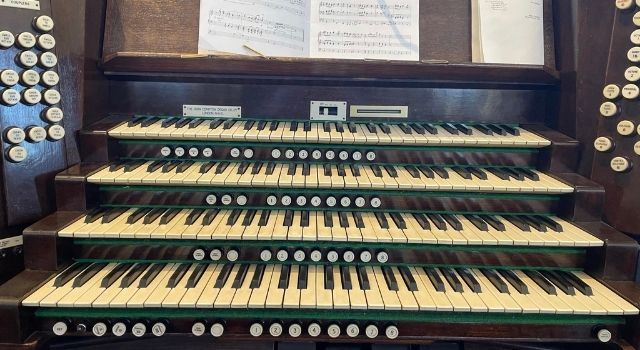
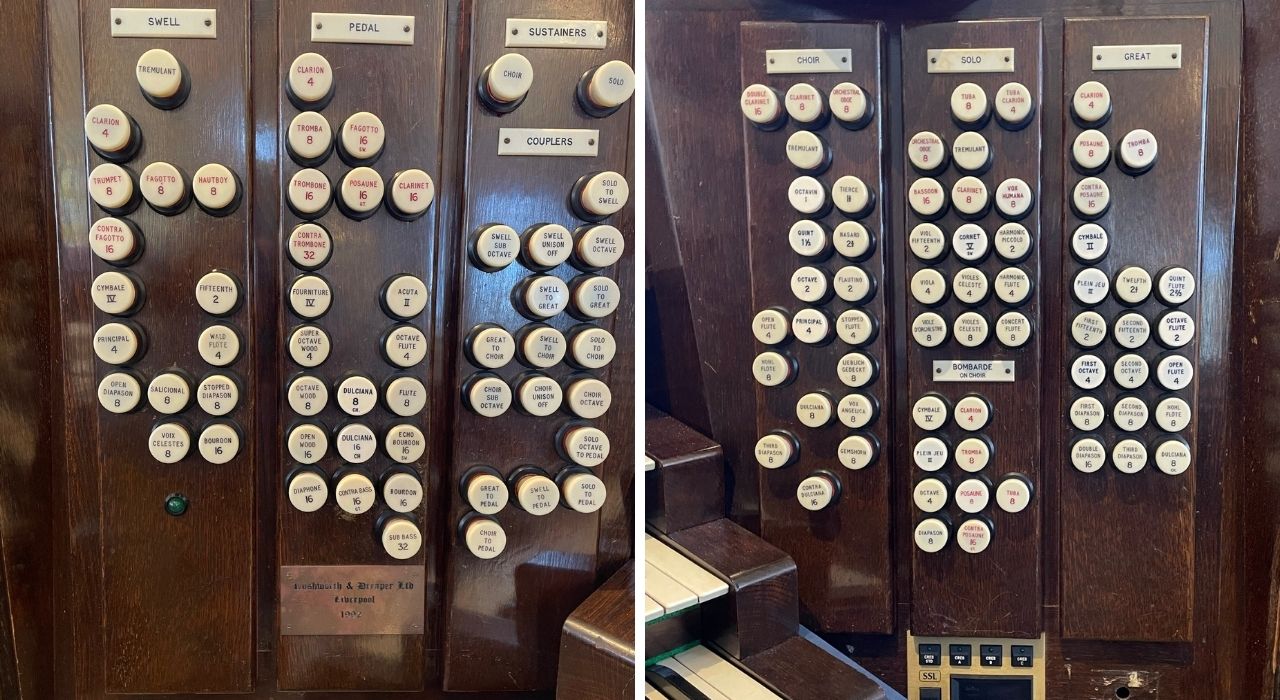
Certainly, today in our instrument range ‘illuminated drawstops’ are considered a poor second to real moving motors, but I would not mind betting back in 1939 when this instrument was installed, the illuminated stops were considered a state-of-the-art desirable addition. How the wheel turns full circle!
Another innovation on this console are displays to show the position of the swell shutters although this was pretty commonplace on ‘Theatre Organs’ from a much earlier time. The console also boasts a row of ‘ventil switches’ that today I was told are more useful in quickly killing off ciphers, but not all these still work.
Another feature I had not seen before are 2 stops called sustainers that will hold permanently on any note that is playing when the stop is drawn for the division to which it relates. If I am being slightly facetious it will allow you to have a bagpipe drone effect without tying up any fingers or feet for the purpose.
The instrument also boasts double touch pistons that allow the most complex of setups to be created that must catch players unfamiliar with the instrument out at times. The second touch though requires considerable force to activate so you would certainly not want to try to exploit it while engaged in a busy and challenging piece.
So as you will gather John Compton embraced all sorts of features that the developing technology of the day allowed. A true organ pioneer.
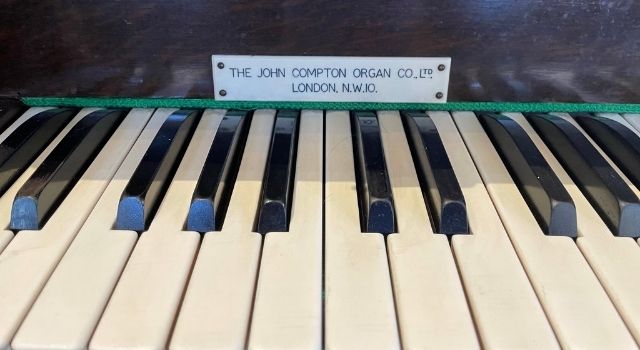
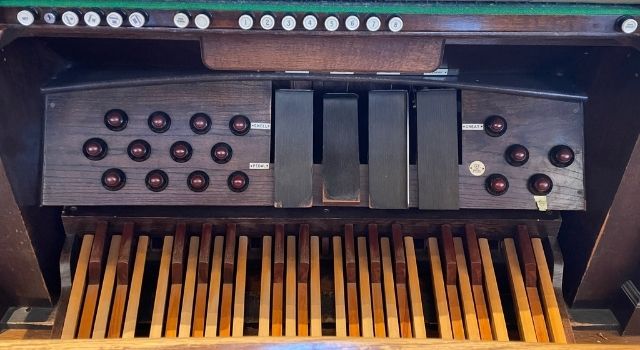
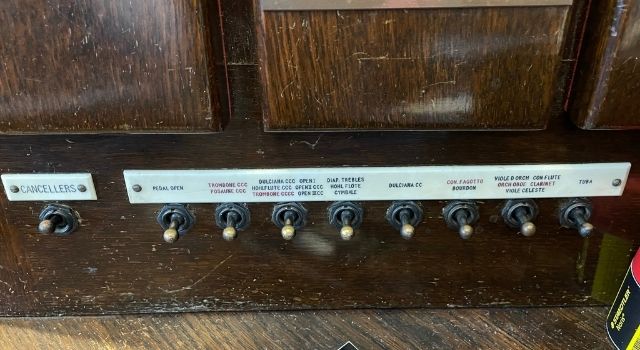
There is no getting away from the fact that the Compton has seen far better days, perhaps not helped by less than sympathetic work by Rushworth & Draper in the 1990’s. For all that, it still plays and certainly makes a huge sound even if this does at the moment require some swell boxes to be jammed open due to motor failure.
While I did not explore the pipe chambers, Director of Music Alexander Binns confirmed that internal access to parts is a nightmare. This often prevents repairs of minor issues until enough have developed to justify the cost of getting to them.
A fully working organ at Derby Cathedral
A similar problem pertains with the Apse organ. Set so high on the East end wall, I gather £1000 of scaffolding is just the start of the cost to get access to begin investigating the issues that lie there. Tuning must be unusually expensive for that small organ as well!
So there we are. A little bit of the history of instruments at Derby.
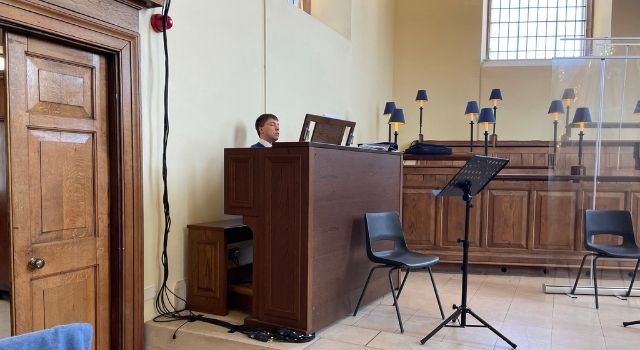
I was amused by a parting remark by assistant director of music Ed Turner. ‘The Viscount Regent 356 instrument will be the first time in over 20 years that a fully working organ is in use in the Cathedral’. I hope that he has not tempted fate, and I shall be hoping there is no ‘Organ Grinch’ lurking in the crypt just waiting for a new instrument to get its teeth into.
I have had a passion for church organs since the tender age of 12. I own and run Viscount Organs with a close attention to the detail that musicians appreciate; and a clear understanding of the benefits of digital technology and keeping to the traditional and emotional elements of organ playing.
